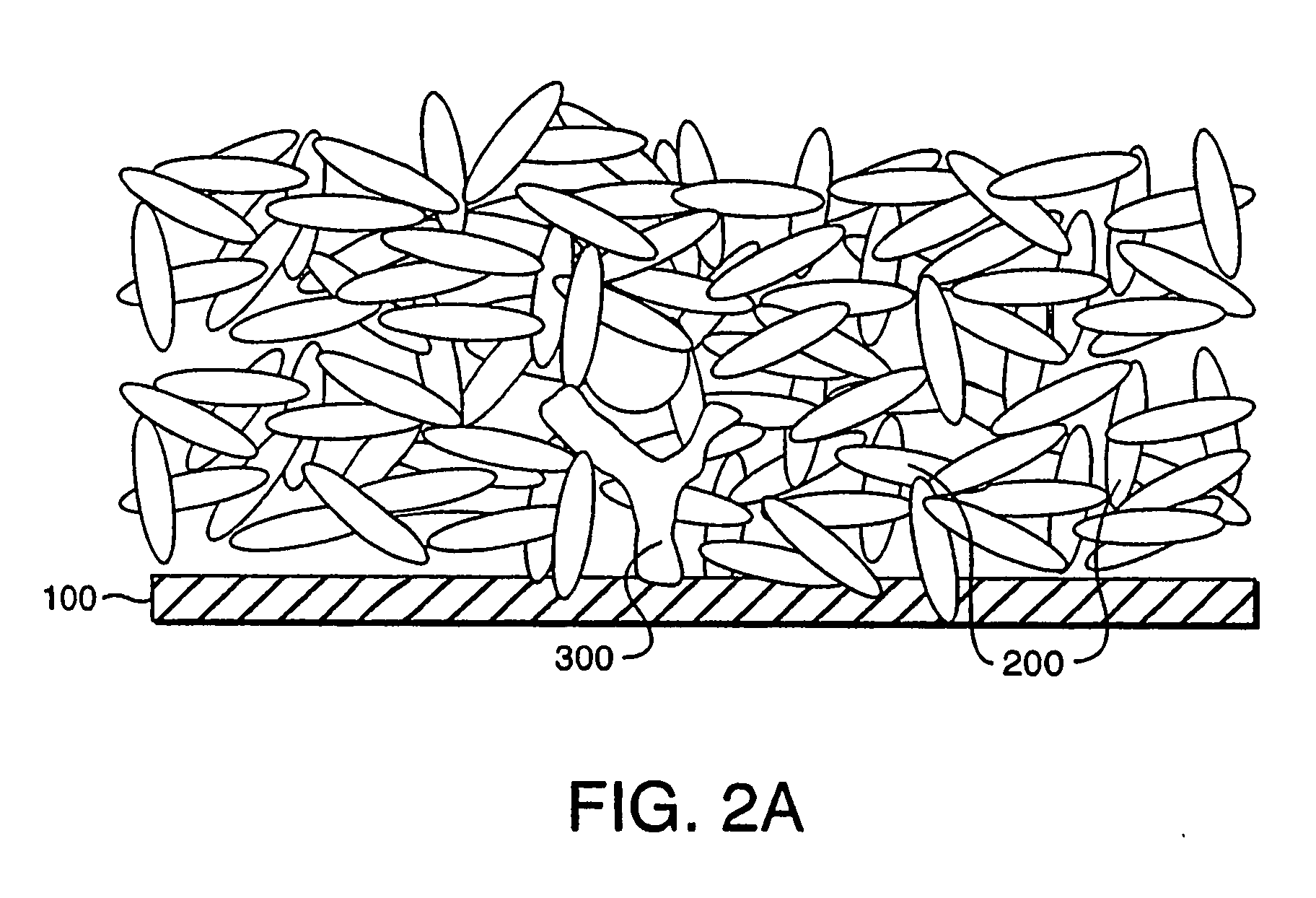Substrates, devices, and methods for cellular assays
a technology of substrates and assays, applied in the field of substrates, devices, and methods for cellular assays, can solve problems such as interference (disruption)
- Summary
- Abstract
- Description
- Claims
- Application Information
AI Technical Summary
Benefits of technology
Problems solved by technology
Method used
Image
Examples
example 1
Fabrication of Nanostructured Substrates for use in Cell Assays
[0521] Nanostructured substrates that align liquid crystal (LC) for use in LC cell assays have been fabricated using: 1) nanoscale molding, 2) nanoabrasives, 3) obliquely deposited gold films.
[0522] Nanomolded substrates were fabricated by the molding of polyurethane and polystyrene from hard masters prepared in silicon. The silicon masters were prepared by electron beam lithography and the topography present in the masters had a width of 200 nm and a height of 50 nm. Studies indicated that immersion of these substrates into aqueous media (phosphate buffered saline) for at least 24 hours does not lead to loss of topography. Furthermore, because of the relatively large scale features, these substrates did not respond (in terms of LC alignment) to non-specific protein adsorption. Polyurethane, micromolded, nanostructured substrates with 50 nm deep tracks were incubated for 4 hrs with cell culture medium (MEM) containing ...
example 2
Liquid Crystals Reliably Report Cell Number
[0525] CHO K1 cells were seeded in DMSO onto anisotropically ordered nanostructured substrates of obliquely deposited gold that align liquid crystals. The cells were allowed to attach for 4 hours. The media was removed and the cells were fixed in methanol, gluteraldehyde or they were left unfixed. The slides were either dried in a stream of Nitrogen or left wet and then covered with a film of a nematic LC. A variety of LC films, including 5CB, E7 and TL205 were able to accurately report the presence of cells regardless of their state of hydration or method of fixation. Substrates with 100, 300, 600 and 1200 cells per 3.14 mm2 (equivalent to approx 5,600-67,000 cells seeded into a single 15 mm diameter of a 24 well plate) were imaged through polarizing filters and the images were analyzed for gray scale intensity using NIH Image software. The presence of cells locally prevents the LC film from gaining access to the ordering influence of the...
example 3
Stability of LC Response
[0526] It was noted in the experiments conducted with cells, the LC assays provide an unambiguous signal that persists for weeks without appreciable change. This was true of cells that were fixed prior to the addition of LC and to live cells coated with the LC.
PUM
| Property | Measurement | Unit |
|---|---|---|
| molecular weight | aaaaa | aaaaa |
| molecular weight | aaaaa | aaaaa |
| wavelengths | aaaaa | aaaaa |
Abstract
Description
Claims
Application Information
 Login to View More
Login to View More - R&D
- Intellectual Property
- Life Sciences
- Materials
- Tech Scout
- Unparalleled Data Quality
- Higher Quality Content
- 60% Fewer Hallucinations
Browse by: Latest US Patents, China's latest patents, Technical Efficacy Thesaurus, Application Domain, Technology Topic, Popular Technical Reports.
© 2025 PatSnap. All rights reserved.Legal|Privacy policy|Modern Slavery Act Transparency Statement|Sitemap|About US| Contact US: help@patsnap.com



